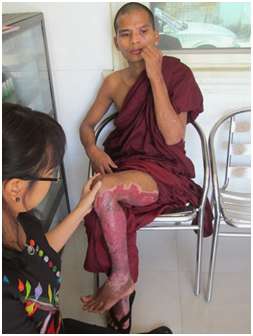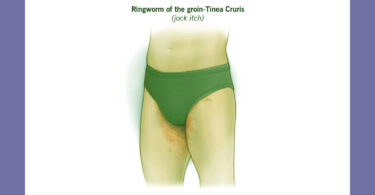In November of last year, riot police descended on six camps of protesters outside the town of Monywa, near Mandalay in Upper Burma. Since the summer, a coalition of activists, monks and local people had been demonstrating against a mining project in the area which was a joint venture of a Chinese corporation and a company owned by the Myanmar military.1
In the biggest organized expression of dissent since democratic reforms were instituted by the government, the protesters were challenging the project because it has resulted in environmental degradation, forced relocations and the confiscation of 7800 acres of land. Demanding a closure of operations, they set up camps in the area and were disrupting work with lines of armed linked protesters that impeded the movement of trucks.
On the day that opposition leader Aung San Suu Kyi was to visit the area, the government ordered a heavy-handed response. Initial reports of water cannons, tear gas and fire bombs being used on the protesters proved to not be fully accurate. Months later, independent investigations confirmed that the riot police had used white phosphorus, which is an effective smoke screen and a lethal chemical agent that causes deep tissue burns, as well as causing death if inhaled or ingested. Introduced by the British during the First World War, it was subsequently used by British colonial forces in the Middle East and Allied forces during the Second World War. Since then, white phosphorus has been deployed during conflicts in Korea, Vietnam, Chechnya, Iraq, Gaza, Afghanistan and Yemen. Although not explicitly banned by the Chemical Weapons Convention, in the eyes of experts it is a very controversial weapon, especially when used on civilians.
Apparently, monks involved in demonstration bore the brunt of the chemical attacks. Scores were hospitalized and treated for severe burns. Unfortunately, much of the treatment proved ineffective, including many skin grafts that did not take.
Learning about this in Yangon, the homeopathic physician Dr. Kyu Kyu Lwin immediately set out to volunteer her services. Enlisting the help of local activists and Buddhist clergy, she made the 750 kilometers, nine hours journey and began treating as many of the injured she could find.
Dr. Kyu Kyu Lwin developed an effective protocol that mainly relied on the prescription of the homeopathic remedy Cantharis, commonly known as ‘Spanish Fly’, as both an internal and topical medicine. With the success of her treatment, many monks have been brought to her for homeopathic care. While she has made repeated visits to the area to work with the monks locally, some monks have also traveled to her clinic Yangon. Hospital facilities are now being made available for her to continue her work.
Cantharis is made from an emerald green blister beetle. This remedy is an old standby introduced by Hahnemann that is best known for its use in cystitis and burning in the urinary tract. In fact, it has an affinity for internal and external membranes throughout the body where there is rapid, violent inflammation and burning sensations are present.
The mental state is extremely agitated and often there is a paradoxical increase in sexual desire even while suffering from an acute cystitis. As one of the 19th century masters put it, “the patient is uneasy, restless, distressed and dissatisfied, with an excessive desire for sexual congress.”
Cantharis has a strong action on the skin, very useful for inflammations or eruptions that produces blisters filled with liquid or even blood. As such, it is one of our most important remedies that can be used topically as well as taken internally for burns, especially serious ones leading to blistering, infection and gangrene.
There are many other remedies that can be useful for burns, some of the most important of which include Arsenicum, Causticum, Urtica Urens, Apis, Carbolic Acid and Calendula. Each one has its own indications for the type of burn as well as accompanying symptoms. For instance, Arsenicum is used for serious burns where, counter intuitively, warm compresses feel better than cold ones, and the person feels anxious and restless. Urtica Urens, which is stinging nettles, is for more minor burns, especially for scalds from hot water. Causticum is useful for scars and other long-term issues that persist after a burn. Calendula (Marigold) in homeopathic dilution is very effective when applied topically in superficial burns to promote healing and prevent infection. Some remedies, like Cantharis, are taken both internally and applied topically, while others are either exclusively for internal or external use.
The homeopathic materia medica is replete with ‘vulnerary’ medicines, that is, medicines that treat injuries or wounds. Burns are just one of many kinds of physical traumas, such as closed head injuries, broken bones, bruising, lacerations and puncture wounds, that are very responsive to homeopathic treatment.
1. Kyaw Phyo Tha, “Copper Mine Protesters Burned Out in Police Raid”, November 29, 2011, The Irrawaddy






Very interesting this trip you made to Myamar. Here (Brasil) these names you mentioned (Burma and others) were heard only during WWII. People and situations where freedom were conquered daily and, sometimes, with life’s risc. Thank you – Edson
it is very interesting to learn an read about all this. thank you gun